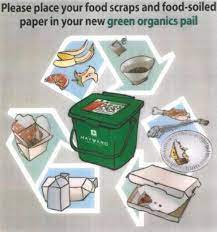Waste Management: A Serious Problem Of The Modern Era (Part 1)

Saw the new pair of sneakers? Simple, throw out the old ones and get them. Love the fresh colour of the newly launched phone? Get rid of the old one. Although have you wondered, where your discarded items go?
Every year, people across the world dump 2.12 billion tons of waste.
The numbers are this high because in our generation, humans throw out a majority of everything purchased within six months. Since the reign of the industrial revolution, waste management has been a massive environmental concern. This is simply because dealing with the continuous generation of such high amounts of waste isn’t an easy affair. In this two-part article, we shall see what are the different kinds of waste and how to manage them better.
Categories Of Waste
Waste is broadly classified into two main categories: biodegradable and non-biodegradable waste
Sources And Types Of Waste
As the name suggests, this type of waste is produced by industrial activities. They generally include materials that are rendered useless or are by-products of certain processes. Most industries dump their waste in water bodies or in the atmosphere (in cases of gaseous by-products) causing air and water pollution.
Commercial waste comes from premises that are used for trade, business, recreation, education or entertainment. This includes waste products from schools, offices, shops, etc. The waste mainly consists of paper and plastic.
Waste that is collected while doing household activities is called domestic waste. Vegetable peels collected during cooking, human excreta, etc are some examples of domestic waste.
Agricultural waste is produced in the fields and is a result of various agricultural processes. This type of waste generally includes cattle waste, harvest waste, husk, and more.
Waste that is toxic, reactive, corrosive or flammable is regarded as hazardous waste. They are harmful to the environment and can also be a direct threat to human life. Examples of hazardous waste include toxic chemicals, mercury-containing batteries, automotive gases and oils, etc.
E-waste or electronic wastes are discarded electrical or electronic devices. With the increased use of technology in everyday life, e-waste production is on a rise. This is one of the biggest modern-day concerns, as when exposed to the environment these wastes increase toxins which result in elevated risks of cancer as well as developmental and neurological disorders.
In the next article, we will discuss how to easily manage waste and what we can do about this global problem.
– Aryaman Darda